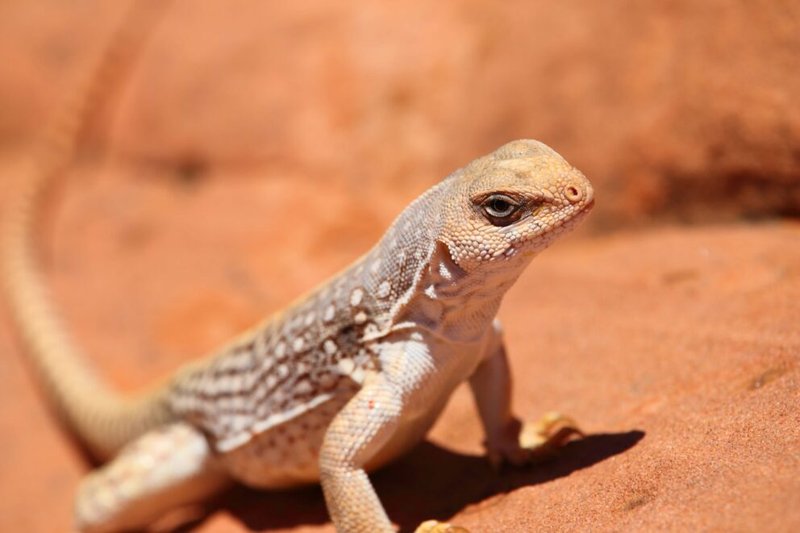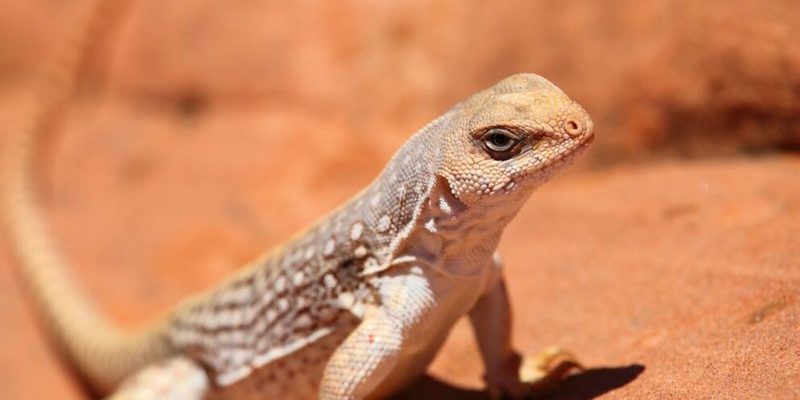
Desert iguanas, known scientifically as *Dipsosaurus dorsalis*, are not just any lizards. They’re fascinating pets for enthusiasts and a vital part of their ecosystems. Understanding their lifespan and growth expectations can help anyone interested in these reptiles—whether you’re looking to adopt one or just curious about their characteristics. Let’s dive into this desert dweller’s life cycle and what you can expect when it comes to growth and longevity.
Understanding the Lifespan of Desert Iguanas
Desert iguanas typically have a lifespan of around 10 to 15 years in the wild. This range can be influenced by various factors such as habitat, availability of food, and threats from predators. In captivity, with proper care, some desert iguanas can live even longer—up to 20 years! That’s quite a commitment if you’re thinking about bringing one into your home.
Here’s the thing: just like us, these lizards face challenges in their natural habitat. Predators like birds and snakes can pose significant threats, and environmental factors like food scarcity can affect their survival rates. The more stable their habitat, the better their chances at reaching that long lifespan. In captivity, however, owners can create a safe and controlled environment that can help maximize their lifespan.
But think about what that means if you choose to keep a desert iguana as a pet. You’re not just welcoming a cute little lizard into your home; you’re signing up for the next decade or two of care. So, if you provide them with a good diet, suitable habitat, and regular vet check-ups, you might just have a long-lived companion by your side.
Growth Stages of a Desert Iguana
Just like humans go through different stages of life, desert iguanas have several growth stages too. They start as hatchlings, and then they grow into juveniles and, eventually, adults. Each stage has its own critical needs and characteristics, so let’s break them down.
1. Hatchlings: After they hatch, desert iguanas are tiny—usually around 4 to 6 inches long. During this period, they’re particularly vulnerable, needing warmth and access to food to kickstart their growth. A diet rich in greens and some insects is crucial for their development.
2. Juveniles: Between 6 months to 2 years, juvenile iguanas start gaining length and weight rapidly. They can grow up to 12 inches in this period! Diet still plays a huge role, and owners should ensure they’re providing a balanced intake of vegetables and quality protein.
3. Adults: By the time they reach 3 years old, desert iguanas typically reach their adult size of about 18 to 24 inches in length. At this point, their growth slows significantly, but it’s important to maintain a proper diet and environment to keep them healthy.
Understanding these growth stages can help you provide better care for your desert iguana. Providing suitable habitats, lighting, and nutrition tailored to their stage of life can significantly affect their health and wellbeing.
Factors Influencing Growth Rates
You might be wondering what factors really impact how fast your desert iguana grows. Well, there are quite a few elements to consider. It’s all about creating a balanced environment that promotes healthy growth.
– Diet: A well-rounded diet is one of the most critical factors. Desert iguanas are mostly herbivorous, thriving on a mix of leafy greens, vegetables, and fruits. If they’re fed a poor diet, their growth could be stunted.
– Temperature: These reptiles are ectothermic, which means their body temperature relies on their surroundings. A warm environment helps support digestion and growth, so ensuring proper basking and hiding spots is key.
– Lighting: Ultraviolet (UV) light is essential for their health. It helps them synthesize vitamin D3, which is crucial for calcium absorption. Without proper exposure to UV light, they can suffer from metabolic bone disease, which can affect growth and longevity.
– Stress Levels: Believe it or not, stress can impact an iguana’s growth. If they feel threatened or uncomfortable, they might not eat properly, stunting growth. A calm habitat with minimal disturbances can aid in their development.
Keeping these factors in mind can help ensure that your desert iguana grows healthy and strong. It’s all about creating an environment that caters to its biological needs.
Common Health Issues Affecting Lifespan
Like any pet, desert iguanas can face health challenges that may affect their lifespan. Being aware of these common issues can help you catch potential problems early.
– Metabolic Bone Disease: As mentioned earlier, if they don’t get enough UV light or calcium in their diet, they can develop metabolic bone disease. This condition can lead to weakness, deformities, and even death if untreated.
– Respiratory Infections: These iguanas are susceptible to respiratory infections, especially if the environment is too cold or humid. Signs include wheezing or labored breathing, and early treatment is crucial.
– Parasites: Just like other reptiles, desert iguanas can fall victim to internal and external parasites. Regular vet check-ups can help catch these issues early on and keep your pet healthy.
– Obesity: Overfeeding, especially in captivity, can lead to obesity, which can cause various health issues. Monitoring their diet and ensuring they get enough exercise is vital.
It’s important to be proactive about these potential health issues. Regular vet visits, a proper diet, and a suitable environment can go a long way toward preventing problems.
Caring for Your Desert Iguana
If you decide to welcome a desert iguana into your home, you’ll need to know how to care for it properly. Providing a suitable habitat and routine can make a world of difference.
– Enclosure: A spacious enclosure is a must. Desert iguanas thrive in environments where they can bask, hide, and explore. A glass terrarium with a heat source, UV light, and hiding spots will make them feel safe and happy.
– Temperature and Humidity: Keeping the right temperature gradient in their enclosure is crucial. One side should be warmer for basking, while the other can be cooler. As for humidity, desert iguanas prefer a drier environment, so avoid overdoing it with water sources.
– Diet: As mentioned earlier, a balanced diet is key. Offer a variety of leafy greens, veggies, and occasional fruits. Avoid feeding them high-fat foods or too many insects since they’re primarily herbivorous.
– Handling: If you want to bond with your iguana, handle them gently and regularly. But remember, not all iguanas enjoy being held, so watch for signs of stress. Respect their comfort levels to build trust over time.
Taking the time to understand and implement these care guidelines will help ensure your desert iguana thrives, giving you both years of companionship.
The lifespan and growth expectations of a desert iguana are fascinating and complex. From hatchling to adult, these lizards navigate various challenges in their growth journey, and understanding their needs can significantly impact their longevity. If you’re considering one as a pet, remember that providing a safe, nutrient-rich environment is crucial.
So, as you think about bringing a desert iguana into your life, keep in mind that it’s not just a pet; it’s a long-term commitment. With proper care, these remarkable reptiles can live healthy, fulfilling lives, bringing a touch of desert magic into your home for many years to come.

